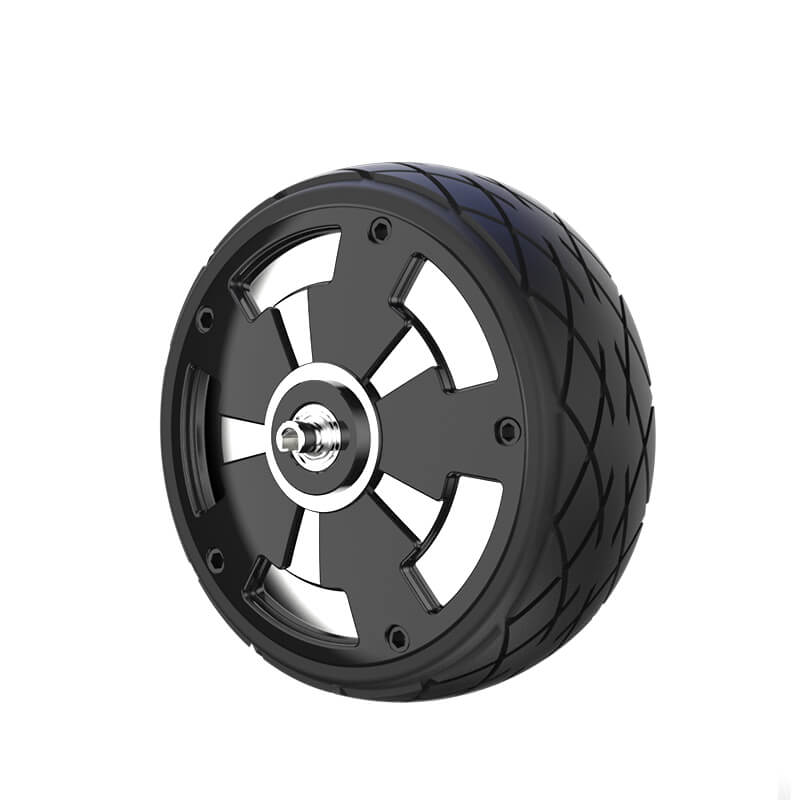Unlocking Precision: The Vital Role of Motor Drivers in Servo Motor Technology
In the realm of automation and robotics, precision is king. Whether it's the robotic arm assembling microchips, a camera autofocus system, or an autonomous vehicle navigating complex environments, control over motion must be exact, reliable, and adaptable. At the heart of these sophisticated systems lies a crucial player: the servo motor. But a servo motor’s true potential is unlocked only when paired with a high-quality motor driver. For many engineers and enthusiasts, understanding the dance between servo motors and their drivers opens a gateway to designing machines that are not just functional but also marvels of precision and efficiency.

What is a Servo Motor?
Before diving into the nuances of motor drivers, it's essential to grasp what makes servo motors special. Essentially, a servo motor is an actuator that provides precise control of angular or linear position, velocity, and acceleration. Unlike standard motors, servo motors are often equipped with feedback mechanisms—such as encoders or resolvers—that constantly inform the control system about the motor’s position or speed. This feedback enables closed-loop control, allowing the system to make real-time adjustments and maintain tight tolerances.
Servo motors come in various types, including AC servo motors, DC servo motors, and brushless DC (BLDC) servos. Each type has its own set of advantages, but the common thread is their ability to deliver refined motion control necessary for complex applications.
Why Do Servo Motors Need Drivers?
While the motor itself is an essential component, it cannot operate autonomously in most automation systems. It needs a motor driver—sometimes called a servo driver or servo amplifier—to translate control signals into actionable power that drives the motor. Think of the motor driver as a skilled conductor guiding an orchestra; it ensures every instrument (or motor phase) plays at the right time, intensity, and rhythm.
The motor driver accomplishes several critical tasks:
Power Amplification: It translates low-voltage control signals into higher-current power signals capable of moving the motor. Feedback Processing: It receives real-time feedback from the motor, adjusting power delivery to correct errors in position, speed, or torque. Protection and Safety: It safeguards the motor and driver circuitry against overcurrent, overvoltage, overheating, and other electrical faults. Control Algorithms: Modern drivers implement sophisticated algorithms, such as Field-Oriented Control (FOC), to optimize efficiency and torque production.
Without a proper driver, even the most technologically advanced servo motor can perform poorly or suffer damage. The synergy between motor and driver is fundamental to achieving the performance levels demanded by contemporary applications.
The Anatomy of a Motor Driver for Servo Motors
A typical servo motor driver is a compact, sophisticated piece of hardware featuring several key components:
Power Supply Section: Converts incoming AC or DC power into the needed voltage and current for the motor. Control Interface: Allows operators or controllers to send commands via various communication protocols like EtherCAT, CANopen, USB, or Serial interfaces. Feedback Loop Processor: Integrates encoder or resolver signals to continuously monitor the motor's actual position and velocity. Amplifier Circuit: Uses power transistors or IGBTs (Insulated-Gate Bipolar Transistors) to switch and modulate current flow into the motor phases. Protection Circuits: Include features like overcurrent protection, brake control, and thermal shutdown mechanisms. Control Algorithm Implementer: Software or firmware embedded within the driver that manages motion profiles, error correction, and dynamic adjustments.
This complex integration ensures the driver can deliver smooth, accurate motion, even under challenging conditions.
The Significance of Control Algorithms
Control algorithms are central to how effectively a motor driver manages a servo motor's performance. Among the most popular is the Field-Oriented Control (FOC), also known as vector control. FOC manages the motor's magnetic fields in real time, allowing for high precision, high torque, and fast dynamic responses.
Implementing advanced algorithms allows servo systems to:
Achieve rapid acceleration and deceleration Minimize vibration and noise Enhance energy efficiency Prolong motor lifespan
The combination of intelligent algorithms and feedback mechanisms forms the backbone of modern servo control systems, providing the foundation for high-performance automation.
Applications of Motor Drivers in Servo Motors
The versatility of motor drivers for servo motors manifests across countless industries:
Robotics: Precise arm movements, grippers, and navigation systems rely heavily on servo drive accuracy. Manufacturing: CNC machinery and assembly lines depend on exact positioning, often operating at rapid speeds and high duty cycles. Aerospace and Defense: Stability and fine control are vital in instrumentation and missile guidance. Medical Equipment: MRI machines, surgical robots, and diagnostic devices require delicate, accurate movements. Consumer Electronics: Camera autofocus mechanisms and gaming controllers leverage responsive servo systems.
Each application demands a tailored approach in selecting a motor driver that matches the motor’s specifications and the system’s control requirements.
Choosing the Right Driver
Selecting a motor driver for a servo motor is not a trivial task. It’s a balancing act involving multiple factors:
Voltage and Current Ratings: Ensuring the driver can handle peak loads. Communication Protocols: Compatibility with existing control systems. Feedback Compatibility: Matching encoder types and resolutions. Control Features: Support for various algorithms and motion profiles. Environmental Conditions: Resistance to dust, vibration, temperature extremes.
Picking the right driver means aligning its capabilities with your system’s demands, optimizing operational efficiency and longevity.
Leveraging innovations in modular drive technology, Kpower integrates high-performance motors, precision reducers, and multi-protocol control systems to provide efficient and customized smart drive system solutions.




































